Pine Grosbeaks Chowing Down (SMAP round 82)
This week's #FeatheredFriends #SMAP challenge is show a bird with food. Here I present a wintertime frugivore that was on my target list for a long time:
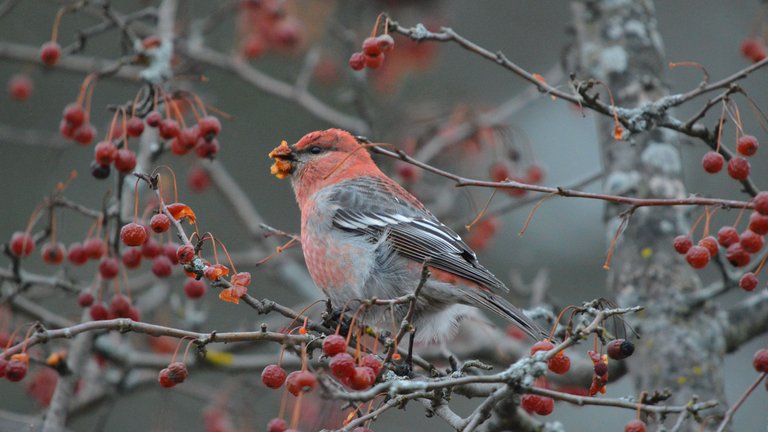
The Pine Grosbeak is a bird of boreal and subalpine evergreen forest regions around the northern hemisphere. But occasionally, depending on the crop of cones and seeds in any given year, this species will irrupt southward to find food in the winter.
Here is the general approximate range of this finch from the Cornell Labs All About Birds site:
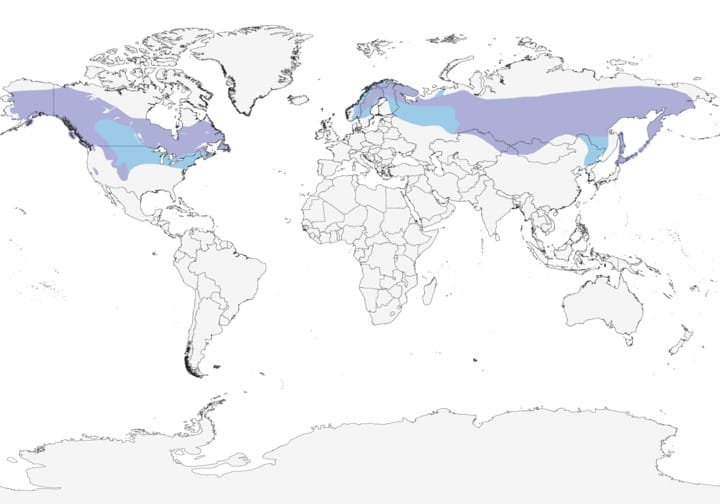
Since the pine trees have cyclical seed years, the winter finches also cyclically move south for food. Other species that often irrupt south are Redpolls, Evening Grosbeaks, Crossbills, Siskins, Blue Jays, Red-headed Nuthatches, and more. For instance see the difference in these Pine Grosbeak observations from the winter of '17-'18 and the winter of '20-'21. Data taken from eBird.
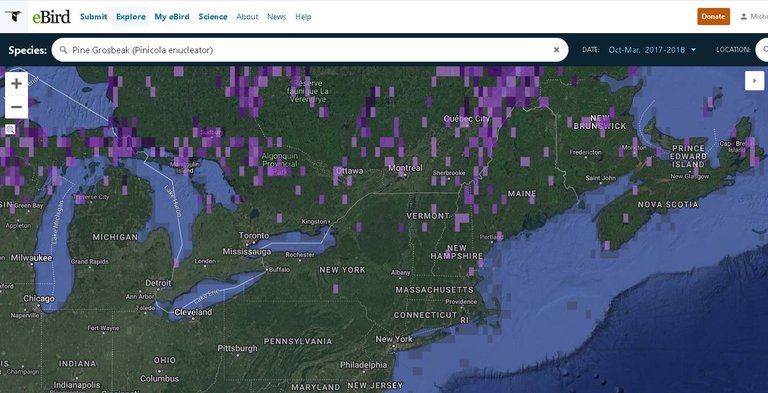
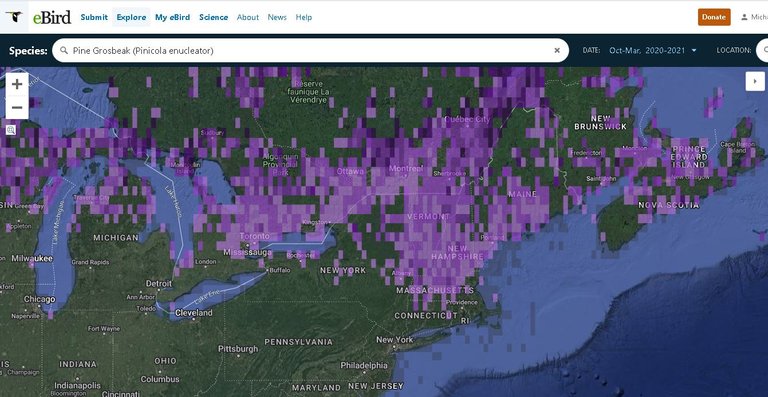
As you can see in the winter of 2020 Pine Grosbeaks started to flood south along the eastern United States out of their usual Canadian haunts. These are the years that give people a chance to see these birds without having to travel far north. There are researchers, the Finch Network, who study these irruptive events and give out advance notice based on the study of the trees and vegetation during the summer months.
I, however, got to see my first Pine Grosbeaks in northern Vermont in an "off year." I saw a flock of them in a small ornamental tree in a parking lot.

I'm not sure what kind of fruit tree this is but it appears in many pictures of these birds. So it must be one of their favorites 😋
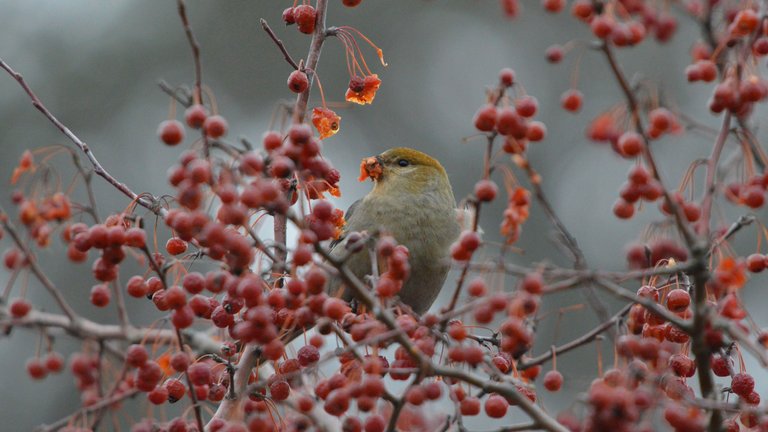
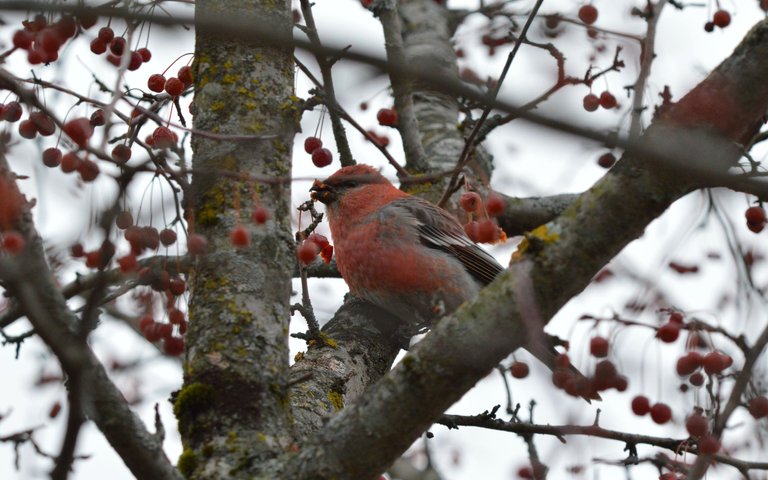
It is definetely yummy fruit, but also lovely backround for the birds.
Awesome images of Pine Grosbeaks and interesting facts about them.
Lovely captures of the pretty grosbeak.
Thank you 😊
Posted via D.Buzz
Your content has been voted as a part of Encouragement program. Keep up the good work!
Use Ecency daily to boost your growth on platform!
Support Ecency
Vote for new Proposal
Delegate HP and earn more